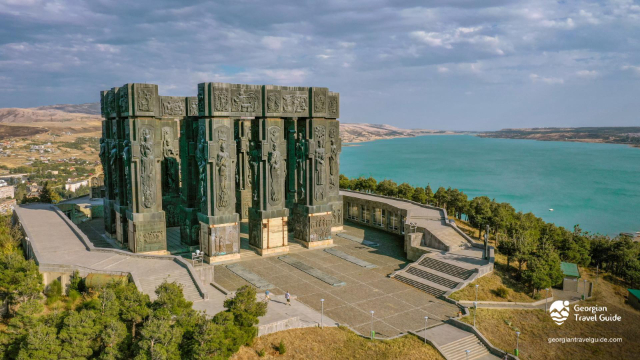The "Chronicle of Georgia," also known as "Kartlis Tskhovreba" in Georgian, is an important medieval Georgian historical and literary work. It was commissioned by King Vakhtang VI of Kartli (a historical region in present-day Georgia) in the 13th century and completed in the early 14th century.The "Chronicle of Georgia" is written in ancient Georgian and is a collection of historical narratives, genealogical information and legendary accounts. It covers the history of the Georgian people from mythical times to the 14th century, tracing the lineage of the ruling Bagrationi dynasty and recounting important events, wars, and religious developments.The chronicle is a significant source of information for the study of medieval Georgia and its political and cultural history. It provides insights into the social structure, religious practices, and dynastic struggles of the period. It also includes mythical and legendary stories that were an integral part of Georgian folklore.The text of the "Chronicle of Georgia" is accompanied by colorful and detailed illustrations that add visual depth to the historical accounts. These illustrations depict scenes of battles, court life, religious ceremonies, and legendary events, providing a vivid portrait of the era.The "Chronicle of Georgia" is not only a historical document, but also a literary masterpiece. It shows the rich literary tradition of medieval Georgia, with its poetic language, metaphors and vivid descriptions. The chronicle played an important role in defining Georgian national identity and cultural heritage.Today, the "Chronicle of Georgia" is preserved in several manuscripts and has been studied by scholars to gain insights into Georgia’s medieval past. It continues to be a valuable source for historians, linguists and people interested in Georgian history and culture.In summary, the "Chronicle of Georgia" is a medieval Georgian historical and literary work that provides a comprehensive account of the country’s history, legends and genealogy. It represents a witness to Georgia’s rich cultural and historical heritage and its enduring importance in the study of the region’s history.













